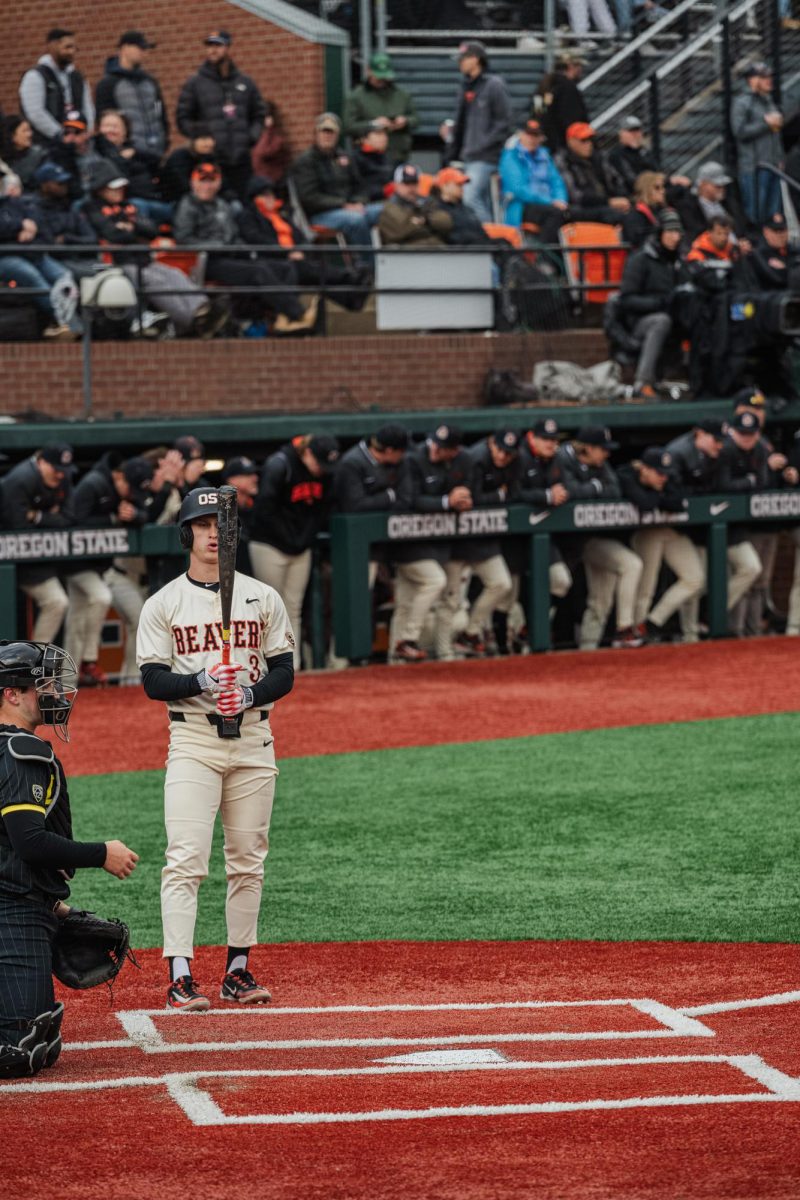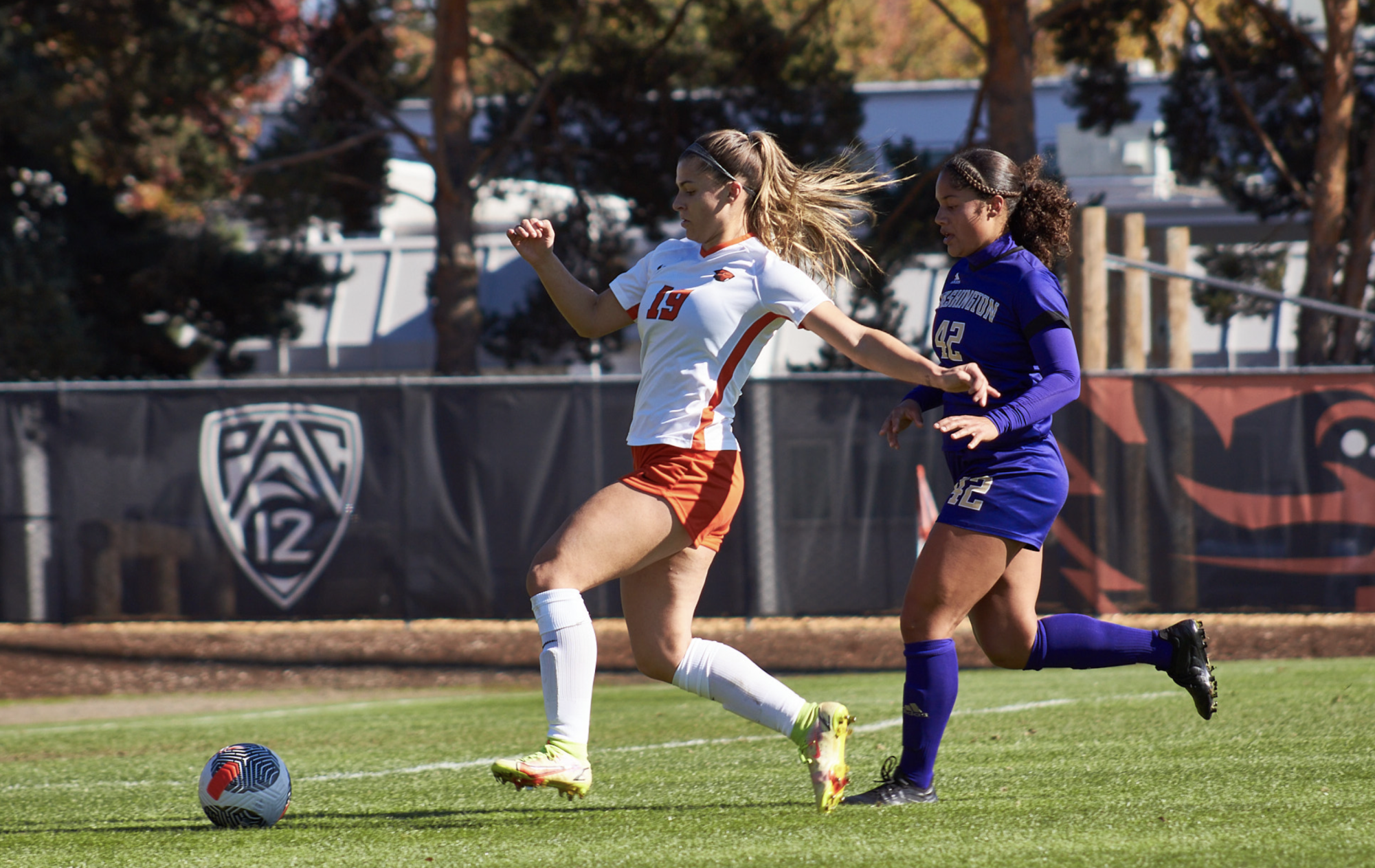The first domino of the PAC-12’s collapse fell back in June 2022 when the University of Southern California and the University of California Los Angeles announced they would leave the PAC-12 Conference for the BIG-10 Conference in 2024.
By September 2023, eight other schools announced they would depart the PAC-12 Conference in 2024, leaving Oregon State University and Washington State University as the remaining conference members next year.
The collapse of the PAC-12 Conference leaves OSU with a series of difficult questions headed into 2024, such as who the Beavers will play in 2024. How far will the Beavers travel to do so? What effects will conference realignment have on revenue, recruitment, and morale?
OSU and WSU announced an agreement with the Mountain West Conference on Friday to schedule six games for both schools in 2024. Both schools will play three games at home and three on the road against teams in the Mountain West but are ineligible to play in the Mountain West Conference championship game.
The agreement gives Oregon State some clarity on what its schedule will look like for next year, but the 2024 full schedule has yet to be finalized with ongoing talks to schedule opponents as of the print date.
“It’s certainly a path forward. The model works, and we’re thinking about six Group of Five games, five Power Five’s, and an FCS. We believe that model will do great things and move us towards a path of a college football playoff if we can play at the level we know that we can play at,” said Oregon State Athletic Director Scott Barnes.
The timing of the release date for the complete schedule will be announced soon, according to Barnes. The agreement in scheduling also does not include a reverse merger of the Mountain West Conference into the PAC-12 Conference in two years, which had been discussed in September.
Back in September, Oregon State athletic director Scott Barnes mentioned that regardless of whether the Beavers stayed members of the PAC-12, they would see less revenue for athletics.
“The revenues that we will receive will be less. Our priority in that is what it’s always has been, and that’s to retain a very high level, vibrant, holistic student-athlete experience… how much less? Not certain yet,’’ Barnes said.
The amount of revenue projected to be lost in the athletics budget for the Beavers in 2024 is around 44 percent less than OSU Athletics’ budget for the 2023 fiscal year.
“Looking ahead to fiscal year 2025, we expect that total revenue to OSU Athletics could decline by as much as 44 percent,” said OSU President Jayathi Murthy.
However, depending on the outcome of the ongoing litigation case between WSU and OSU with the 10 departing PAC-12 schools, could help ease some financial losses both schools face next season with realignment impacting the conference membership.
Following the departures of USC and UCLA to the BIG-10 Conference, the University of Colorado Boulder announced that they would leave the PAC-12 for the BIG-12 Conference in July. A month later, the University of Arizona, Arizona State University, and the University of Utah announced they would leave for the BIG-12 Conference in 2024. That same day, the University of Washington and the University of Oregon announced a move to the BIG-10 Conference.
In a year and a half, the membership of a historic Power Five conference went from 12 to two members changing the landscape of college football forever, as the Beavers are one of the two remaining PAC-12 teams paying the biggest price.
In September, the Pac-12’s two remaining universities brought legal action against the conference and the conference commissioner, George Kliavkoff, to prevent “irreparable harm” to the two remaining schools.
In September, Judge Gary Libey of the Whitman County Superior Court ruled in favor of Washington State and the Beavers, granting the two universities a preliminary injunction, leaving the departing schools with no voting power in the conference.
With prevalent arguments over the departures of all the teams and the issue of voting rights, assets, and existing liabilities lingering, the conference realignment process still needs to be completed.
However, following Libey’s ruling, the departing schools appealed the decision to the Washington State Supreme Court on the morning of Nov. 28th. The court granted a motion establishing a hold on Libey’s ruling. However, the court upheld the ruling from Libey after declining to listen to the appeal from the ten departing schools on Dec. 15, according to the AP, handing WSU and OSU sole control of the PAC-12 Conference board of directors.
In a statement sent out to the Oregon State community, Murthy announced that OSU and WSU had reached a settlement with the other ten departing schools on Dec 21. The settlement allows both schools to chart a path forward as the remaining schools left in the conference.
Amid unprecedented conference realignment, Oregon State finished the 2023 season with an 8-5 record and became bowl-game-eligible for the third consecutive season. However, they soon faced even more adversity as former head coach Jonathan Smith left the team to take the head coaching position at Michigan State University.
The news of Smith’s eventual departure to Michigan State led to a plunge in morale headed into the Beavers regular-season finale against Oregon, which resulted in a 31-7 loss for the Beavers. A week later, the Beavers hired former defensive coordinator Trent Bray as their new head coach to replace Smith and help lead the program amid an uncertain future in 2024.
“It’s disheartening. Especially for the kids who want to go out and prove these schools wrong for not recruiting them in the first place. . . I was reading the other day that the PAC-12 has one of the most D-1 national championships out of all of the Power 5 conferences. Why get rid of one of the most powerful conferences? And it goes back to money and greed,” said former Oregon State wide receiver Jordan Villamin.


















































































































